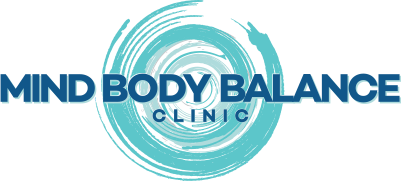
5 Common Lower Extremity Issues Chiropractors Can Treat
Are your legs, feet, or knees in pain more often than not? Lower extremity issues are all too common and can significantly disrupt daily life. From runners experiencing shin splints to office workers developing sciatica, lower extremity conditions impact people across all walks of life. Thankfully, chiropractic care can offer relief by focusing on the root cause rather than temporary fixes.
This blog explores five common lower extremity conditions—sciatica, plantar fasciitis, Achilles tendonitis, knee pain, and shin splints. You’ll learn what these conditions are, what causes them, the warning signs to look out for, and how chiropractic care can help with a variety of treatment options like adjustments, myofascial therapies, therapeutic exercises, and stretching. Whether you’re a health-conscious individual, a fitness enthusiast, or an office worker, staying informed is the first step toward improving your mobility and quality of life.
Sciatica
What is Sciatica?
Sciatica is not a condition in itself but a symptom resulting from irritation or compression of the sciatic nerve—the longest nerve in the body. This nerve runs from the lower back, through the hips and buttocks, and down each leg. Sciatica can occur because of a herniated disc, bone spur, or spinal stenosis. It’s common among those who sit for long hours or lift heavy objects improperly.
Signs of Sciatica to Watch For:
- Sharp, radiating pain in the lower back, buttocks, or down the back of one leg.
- A burning or tingling sensation in the affected leg.
- Weakness or numbness in the leg or foot.
- Increased discomfort when sitting or standing for prolonged periods.
If any of this sounds familiar, seeking early intervention is key. Chiropractic adjustments often help relieve the nerve compression causing sciatica, restoring your comfort and mobility. In addition, myofascial therapies such as trigger point therapy, dry needling, and massage can reduce muscle tension and alleviate the aggravation around the nerve. Incorporating therapeutic exercises and stretching for the area further enhances flexibility and strength, preventing future flare-ups.
Plantar Fasciitis
What is Plantar Fasciitis?
Plantar fasciitis affects the plantar fascia—a thick band of tissue that connects the heel bone to the toes and supports the foot arch. Overuse, improper footwear, or a sudden increase in activity can strain this tissue, leading to pain and inflammation. It’s especially common among runners and those who spend significant time on their feet.
Signs of Plantar Fasciitis to Watch For:
- Stabbing pain along the bottom of your foot, especially near the heel.
- Pain that’s often worse upon waking up or after long periods of rest.
- Difficulty walking or standing for extended periods.
- Tight calves or Achilles tendons as secondary symptoms.
Ignoring plantar fasciitis can lead to chronic pain. Chiropractors can help by addressing gait issues, adjusting misaligned foot joints, and recommending supportive footwear. Myofascial techniques such as targeted massages and trigger point release can ease tension in the arch and surrounding muscles. Stretching and therapeutic exercises further stabilize the area and reduce strain on the plantar fascia.
Achilles Tendonitis
What is Achilles Tendonitis?
Achilles tendonitis occurs when the large tendon connecting your calf muscles to your heel becomes inflamed. Repetitive strain, especially from running or jumping activities, is the usual culprit behind this condition. Left untreated, Achilles tendonitis can progress to more serious issues, like tendon tears.
Signs of Achilles Tendonitis to Watch For:
- Pain or stiffness along the back of your heel or lower leg.
- Swelling, tenderness, or redness near the Achilles tendon.
- Pain that worsens during physical activity or after extended periods of rest.
- A creaking sensation when you move the ankle joint.
Since the Achilles tendon plays a crucial role in walking, running, and jumping, early treatment is essential. Chiropractors can help by alleviating tension in the surrounding muscles, improving joint mobility, and addressing biomechanical imbalances in your posture. They may also use therapies like dry needling and trigger point therapy to reduce inflammation and stiffness in the calf muscles. Strengthening exercises and stretching can be added to improve the tendon’s function and resiliency.
Knee Pain
What Causes Knee Pain?
Knee pain is a broad term that covers a range of conditions, including patellar tendinitis (runner’s knee), bursitis, meniscal tears, and arthritis. Poor posture, overuse, or acute injuries can all contribute to knee pain. Though common among athletes, knee pain also affects those leading sedentary lifestyles due to muscle imbalances or poor ergonomics.
Signs of Knee Pain to Watch For:
- Discomfort, swelling, or stiffness in one or both knees.
- Difficulty bending or straightening the knee joint fully.
- A popping or clicking sound during movement.
- Sharp pain during activities that involve climbing stairs, squatting, or running.
Working with a chiropractor can help address the root biomechanical issues leading to knee pain, improving joint alignment and reducing inflammation over time. Myofascial therapies, such as deep-tissue massage and trigger point therapy, help release tension in tight muscles surrounding the knee. Stretching and strengthening exercises, tailored to your specific needs, are vital for restoring balance and building stability in the joint.
Shin Splints
What are Shin Splints?
If you’ve taken up running or rigorous hiking recently, shin splints might be to blame if you’re experiencing pain along the front of your lower leg. This condition, formally called medial tibial stress syndrome, occurs when the muscles, tendons, and bones of the shin become stressed or inflamed due to repetitive activity. Poor foot mechanics often magnify the problem.
Signs of Shin Splints to Watch For:
- Tenderness, soreness, or pain along the inner side of your shinbone.
- Pain that worsens with exercise but subsides with rest.
- Mild swelling in the lower leg.
- Persistent discomfort when walking or jogging.
Rest is essential for shin splints, but chiropractors can help by correcting alignment issues in the hips, knees, and feet that may be contributing to the pain. Techniques like trigger point therapy, dry needling, and massage can reduce muscle tension in the area. Stretching exercises that target the calves and strengthening activities for the lower legs can also prevent the condition from recurring.
When to Seek Chiropractic Care
Experiencing one or more of the symptoms above? While over-the-counter pain relief might offer a temporary fix, chiropractic care focuses on long-term solutions by addressing the cause, not just the symptoms. Chiropractors can:
- Provide tailored adjustments for misalignments.
- Administer myofascial therapies like trigger point therapy, dry needling, and massage.
- Recommend therapeutic exercises and specific stretches to strengthen supporting muscles.
- Offer ergonomic advice to prevent future problems.
Don’t wait for minor aches to escalate into chronic pain conditions. Early intervention is the key to staying active, healthy, and pain-free.
Take the First Step Toward Pain Relief
Lower extremity conditions like sciatica, plantar fasciitis, Achilles tendonitis, knee pain, and shin splints can negatively impact your life—but they don’t have to. Chiropractic care offers a proactive solution to alleviate pain, restore movement, and prevent further injuries.
Are you ready to prioritize your mobility and health? Book a consultation with Dr. Quintana today and take the first step toward a healthier, pain-free lifestyle.
GENERAL ENQUIRIES
OFFICE HOURS
| Monday | Closed |
| Tuesday | 9am – 6pm |
| Wednesday | Closed |
| Thursday | 9am – 6pm |
| Friday | 9am – 1pm |
| Saturday | 9am – 1pm |
Social Media Outlets
Request Appointment
Please fill out the form below.


